



| Nutrient | Min / Max | Amount |
| Crude Protein | MIN | 11.00 % |
| Lysine | MIN | 0.70 % |
| Methionine | MIN | 0.20 % |
| Threonine | MIN | 0.40 % |
| Crude Fat | MIN | 3.00 % |
| Crude Fiber | MAX | 25.00% |
| Acid Detergent Fiber (ADF) | MAX | 30.00 % |
| Neutral Detergent Fiber (NDF) | MAX | 46.00 % |
| Dietary Starch | MAX | 10.00 % |
| Sugars | MAX | 5.00 % |
| Calcium (Ca) | MIN | 0.80 % |
| Calcium (Ca) | MAX | 1.30 % |
| Phosphorus (P) | MIN | 0.50 % |
| Copper (Cu) | MIN | 40.00 PPM |
| Selenium (Se) | MIN | 0.30 PPM |
| Zinc (Zn) | MIN | 120.00 PPM |
| Vitamin A | MIN | 3000 IU/LB |
| Vitamin D3 | MIN | 600 IU/LB |
| Vitamin E | MIN | 80 IU/LB |
RECOMMENDATIONS FOR THE MAINTENANCE OF YOUR ADULT HORSE
Weight management program: Feeding Purina® Equine Adult® horse feed at a reduced rate may help horses which are obese. Begin by cutting the recommended feeding rate by 10%. Continue to adjust the rate until your horse reaches the desired weight, then return to the feeding rate that is recommended for your horse's weight and lifestyle.
Miniature horses and ponies: Purina® Equine Adult® horse feed is an ideal complete feed for miniature horses and ponies at maintenance and light work activity levels. For feeding directions for miniature horses and ponies, please contact your Purina® horse feed retailer, a Purina® Sales Representative or our Customer Service Department.
Winter feeding: In the winter, the amount of feed may need to be increased by 10-15% to offset the increased calorie requirements of maintaining body condition.
Every horse is unique. After observing the horse for a period of time, you may want to increase or decrease the daily feeding amount of Purina® Equine Adult® horse feed by up to 10% to obtain desired overall body condition and appearance. Purina® Equine Adult® horse feed may be fed as a complete feed because it is formulated with high-quality roughage. You may feed with or without hay or pasture per directions.
FEEDING EQUINE ADULT® HORSE FEED WITHOUT FORAGE
Amount to be fed daily when no forage is fed along with Purina® Equine Adult® horse feed
| Weight of Horse in Pounds | |||
| Lifestyle | 800 | 1,000 | 1,200 |
| Equine Adult® Horse Feed (lbs/day) | |||
| Maintenance-Minimum Activity | 10.00 | 12.50 | 15.00 |
| Maintenance-Average Activity | 11.00 | 13.75 | 16.50 |
| Maintenance-Elevated Activity | 12.00 | 15.00 | 18.00 |
| Light Work | 13.25 | 16.50 | 19.75 |
| Early Gestation (first 250 days) | 11.25 | 14.25 | 17.00 |
Every horse is unique. That’s why the recommended feeding rates Purina suggests for Equine Adult® horse feed may need to be increased or decreased by up to 10-15% to keep your horse in optimal body condition. A 6 lb meal of Equine Adult® Horse Feed supplies a full serving of Outlast® Supplement.
FEEDING EQUINE ADULT® HORSE FEED WITH FORAGE
Good quality hay or pasture may be fed along with Purina® Equine Adult® horse feed. When fed with hay, reduce about 1.0 lb for each 1.5-2.0 lbs of hay offered.
Do not feed less than 0.6 lbs per 100 lbs body weight of Purina® Equine Adult® horse feed per day to meet minimum daily requirements of protein, vitamins and minerals.
Caution
Follow label directions: feeding added selenium at levels in excess of 0.3 ppm in the total diet is prohibited.
Wash hands after feeding/handling animals.
Not for human consumption. Wash feed/water containers regularly
Important
1.Feeding rates will vary with size, age, temperament, health status, forage quality, climate and activity level. Feed at regular times, at least twice daily. Do not feed more than 0.8 lbs/100 lbs of body weight per meal when fed without forage or more than 0.5 lbs/100 lbs of body weight per meal when fed with forage. Do not feed free-choice. Prevent rapid eating by the horse of any feedstuff.
2. Reduce and/or delay feeding a horse which is hot, excited or showing pain, has fever or diarrhea. Consult your veterinarian if any problems arise.
3. Any feed changes should be made gradually over a period of 7 to 10 days. Changes in the rate of feeding should not exceed 1.0 lb per day for each horse.
4. Provide fresh, clean water at all times. Provide your horse with access to salt. Consult with your veterinarian regularly and maintain a routine dental, parasite control and health care program for your horse.
For horses sensitive to dietary carbohydrates, please consult with a veterinarian or nutritionist for a recommended diet.
Purina has simplified our product offering, and this product is no longer available.
We recommend Purina® Equine Senior® Horse Feed.
If you have questions about our feed or need nutritional advice for your horse, Purina nutritionists can help. Ask an Expert
| Nutrient | Min / Max | Amount |
| Crude Protein | MIN | 11.00 % |
| Lysine | MIN | 0.70 % |
| Methionine | MIN | 0.20 % |
| Threonine | MIN | 0.40 % |
| Crude Fat | MIN | 3.00 % |
| Crude Fiber | MAX | 25.00% |
| Acid Detergent Fiber (ADF) | MAX | 30.00 % |
| Neutral Detergent Fiber (NDF) | MAX | 46.00 % |
| Dietary Starch | MAX | 10.00 % |
| Sugars | MAX | 5.00 % |
| Calcium (Ca) | MIN | 0.80 % |
| Calcium (Ca) | MAX | 1.30 % |
| Phosphorus (P) | MIN | 0.50 % |
| Copper (Cu) | MIN | 40.00 PPM |
| Selenium (Se) | MIN | 0.30 PPM |
| Zinc (Zn) | MIN | 120.00 PPM |
| Vitamin A | MIN | 3000 IU/LB |
| Vitamin D3 | MIN | 600 IU/LB |
| Vitamin E | MIN | 80 IU/LB |
RECOMMENDATIONS FOR THE MAINTENANCE OF YOUR ADULT HORSE
Weight management program: Feeding Purina® Equine Adult® horse feed at a reduced rate may help horses which are obese. Begin by cutting the recommended feeding rate by 10%. Continue to adjust the rate until your horse reaches the desired weight, then return to the feeding rate that is recommended for your horse's weight and lifestyle.
Miniature horses and ponies: Purina® Equine Adult® horse feed is an ideal complete feed for miniature horses and ponies at maintenance and light work activity levels. For feeding directions for miniature horses and ponies, please contact your Purina® horse feed retailer, a Purina® Sales Representative or our Customer Service Department.
Winter feeding: In the winter, the amount of feed may need to be increased by 10-15% to offset the increased calorie requirements of maintaining body condition.
Every horse is unique. After observing the horse for a period of time, you may want to increase or decrease the daily feeding amount of Purina® Equine Adult® horse feed by up to 10% to obtain desired overall body condition and appearance. Purina® Equine Adult® horse feed may be fed as a complete feed because it is formulated with high-quality roughage. You may feed with or without hay or pasture per directions.
FEEDING EQUINE ADULT® HORSE FEED WITHOUT FORAGE
Amount to be fed daily when no forage is fed along with Purina® Equine Adult® horse feed
| Weight of Horse in Pounds | |||
| Lifestyle | 800 | 1,000 | 1,200 |
| Equine Adult® Horse Feed (lbs/day) | |||
| Maintenance-Minimum Activity | 10.00 | 12.50 | 15.00 |
| Maintenance-Average Activity | 11.00 | 13.75 | 16.50 |
| Maintenance-Elevated Activity | 12.00 | 15.00 | 18.00 |
| Light Work | 13.25 | 16.50 | 19.75 |
| Early Gestation (first 250 days) | 11.25 | 14.25 | 17.00 |
Every horse is unique. That’s why the recommended feeding rates Purina suggests for Equine Adult® horse feed may need to be increased or decreased by up to 10-15% to keep your horse in optimal body condition. A 6 lb meal of Equine Adult® Horse Feed supplies a full serving of Outlast® Supplement.
FEEDING EQUINE ADULT® HORSE FEED WITH FORAGE
Good quality hay or pasture may be fed along with Purina® Equine Adult® horse feed. When fed with hay, reduce about 1.0 lb for each 1.5-2.0 lbs of hay offered.
Do not feed less than 0.6 lbs per 100 lbs body weight of Purina® Equine Adult® horse feed per day to meet minimum daily requirements of protein, vitamins and minerals.
Caution
Follow label directions: feeding added selenium at levels in excess of 0.3 ppm in the total diet is prohibited.
Wash hands after feeding/handling animals.
Not for human consumption. Wash feed/water containers regularly
Important
1.Feeding rates will vary with size, age, temperament, health status, forage quality, climate and activity level. Feed at regular times, at least twice daily. Do not feed more than 0.8 lbs/100 lbs of body weight per meal when fed without forage or more than 0.5 lbs/100 lbs of body weight per meal when fed with forage. Do not feed free-choice. Prevent rapid eating by the horse of any feedstuff.
2. Reduce and/or delay feeding a horse which is hot, excited or showing pain, has fever or diarrhea. Consult your veterinarian if any problems arise.
3. Any feed changes should be made gradually over a period of 7 to 10 days. Changes in the rate of feeding should not exceed 1.0 lb per day for each horse.
4. Provide fresh, clean water at all times. Provide your horse with access to salt. Consult with your veterinarian regularly and maintain a routine dental, parasite control and health care program for your horse.
For horses sensitive to dietary carbohydrates, please consult with a veterinarian or nutritionist for a recommended diet.
Reviews
You May Also Like

For the widest selection of Purina products – along with personal service and know-how – check with your local retailer.







